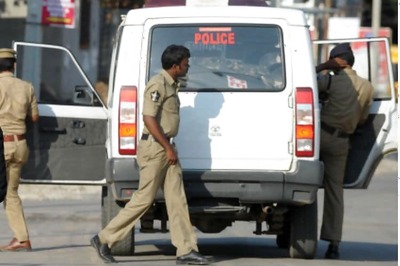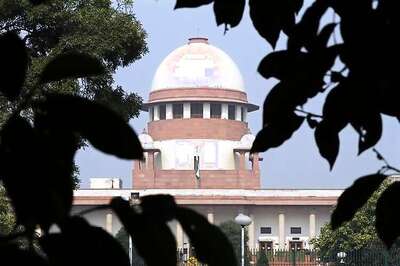
views
Dr Michael Saag spends much of his time treating patients fighting for their lives and working with colleagues who are overwhelmed and exhausted by the relentless battle against the COVID-19 pandemic.
But he enters a different world when he walks out the door of his Alabama clinic: one where many don’t wear masks, keep their distance from others or even seem aware of the intense struggle being waged against a virus that has cost hundreds of thousands of lives nationwide and made so many — including the doctor — seriously ill.
The disconnect is devastating.
“It’s a mixture of emotions, from anger to being demoralized to bewilderment to frustration,” Saag said.
Confirmed cases of COVID-19 have increased an average of more than 1,500 a day over the past week in Alabama, bringing the total to more than 62,100 since the pandemic began in March. At least 1,230 people have died and health officials say fewer than 15% of the state’s intensive care beds are available for new patients. Some hospitals are completely out of room.
It’s not just an Alabama problem. About 250 miles (400 kilometers) from Birmingham, Dr. Chad Dowell warns that his hospital in tiny Indianola, Mississippi, is filling up and so are others, making it difficult to locate beds for the sickest patients even as people debate on social media whether the pandemic is real.
Inside the hospital at the University of Alabama at Birmingham, doctors and nurses in protective gear rush from one emergency to another. They struggle to comfort heartbroken visitors forced to say goodbye to dying relatives long distance via cellphone, Saag said, all while coping with the stress of whether they'll be infected next.
The sharp increase in confirmed virus cases in Alabama has coincided with the reopening of restaurants, bars, theaters, gyms, sports leagues and churches that were all closed down when the virus first hit. Although most have opened at a diminished capacity and with restrictions in place, many patrons haven't been following recommended precautions.
In metro Birmingham, where Saag lives, it has been common to see fewer than half the people inside stores wearing masks. The doctor said he got particularly dispirited recently after stopping by a restaurant on the way home from work to pick up a takeout order of sushi. There were as many as 60 people inside, he said.
"Myself and one other person were the only two people wearing masks. And everybody else, not only were they not wearing masks, they were congregating together,” he said. “And they look at me like I’m some sort of pariah wearing a mask.”
In response, Gov. Kay Ivey this week ordered all Alabama residents 6 and older to wear masks when in public and within 6 feet (2 meters) of someone who is not a relative. Cast against a pandemic that has become increasingly political, the move drew both praise as a potentially life-saving step and harsh criticism from those who called it an unnecessary affront to freedom.
Saag said he hopes the order helps, but it all depends on compliance. Ivey herself said the rule will be hard to enforce, and some police and sheriff's offices have said they won't even try.
During the initial outbreak, doctors and nurses were hailed as heroes in the fight against COVID-19. Some say they now feel more like cannon fodder in a war that has become increasingly divisive.
“People continue to regard the virus as a political scheme or conspiracy theory. People continue to ignore recommended guidelines on how to help slow the virus’ spread. People continue to complain about wearing a mask. We’ve got to do better as a community,” Dowell, the Mississippi doctor, wrote in a Facebook message released by South Sunflower County hospital.
For Saag, the fight is personal. In early March, both he and his adult son came down with the virus after a trip to Manhattan when the epidemic was raging there. First came a cough, followed by fever, a headache, body aches and what Saag called “fuzzy thinking,” or an inability to concentrate.
“The mornings I’d feel fine, thought I was done with it. And then every night it would come right back as if it was just starting all over again,” he said. “The hardest part of the night was that feeling of shortness of breath and not knowing if it’s going to get worse.”
During eight suffocating nights, Saag wasn’t sure whether he’d survive without a ventilator. It never came to that. He is now fully recovered and feels closer than ever to the people he treats.
“When I talk to a patient and I say, ‘Hey, I’ve had it too,’ it’s like we’re connected in a way that I really, honestly haven’t felt with patients ever before — and I’ve been doing this 40 years,” Saag said.
Outside the examination room, Saag has participated in news conferences and done media interviews to encourage basic public health practices, but he knows many people just aren’t listening.
He said it is disheartening to see a widespread disregard for safety measures and worries about Alabama's future at a time when the virus is posing more of a threat than ever.
“I’m just thinking,'`Oh, my goodness. We’re going to be in trouble very soon,’” Saag said.




















Comments
0 comment